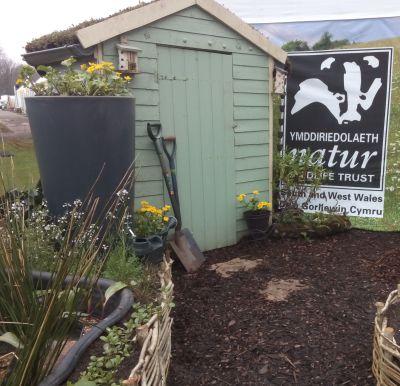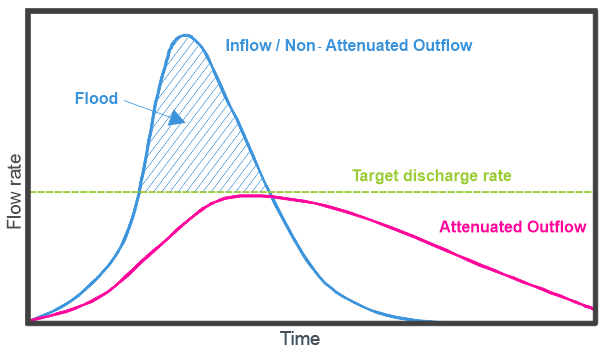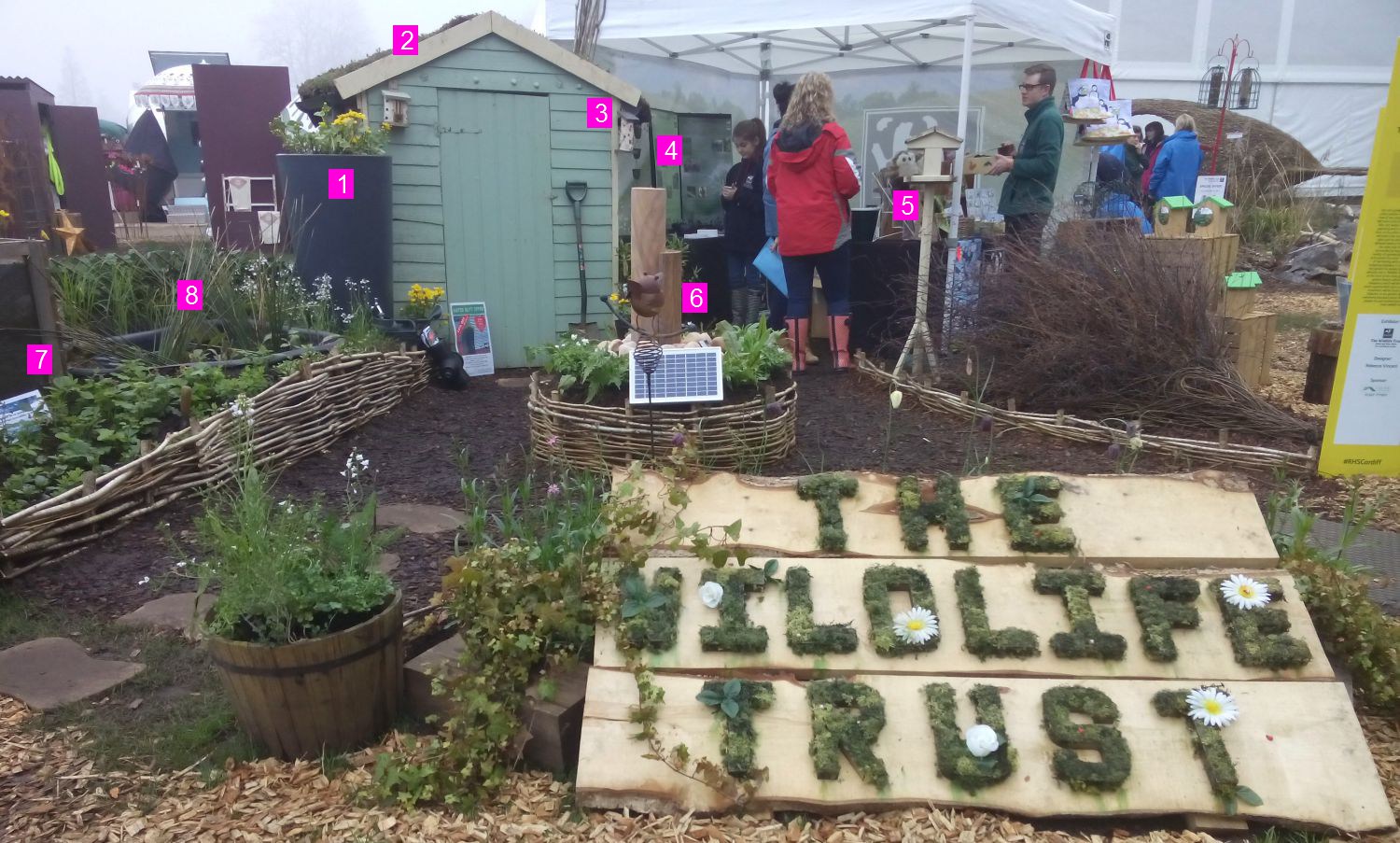
Upstream water attenuation is part of a range of solutions to flooding, even better if it can be combined with wildlife friendly gardening. In this first in a series of blog posts about Sustainable Drainage Systems (SuDS) we look at the role of Rain Gardens in Flood Mitigation.
The term “Rain Garden” has changed over the years. Technically it has always been just one aspect of the design of Sustainable Urban Drainage Systems (SuDS) and referred to a type of soft landscaping that slows the flow of rainwater via small planted “puddles” before it reaches the drain or gulley. A Rain Garden now tends to encompass a whole range of garden design elements including soft landscaping like swales, hard landscaping like infiltration trenches and soakaways, and other components like green roofs, water butts, water features and ponds.
Essentially a Rain Garden nowadays refers to any garden that is designed specifically to attenuate or slow down rainwater to help prevent flooding through;
- increased infiltration into the ground,
- slowing the flow of water to a watercourse or drainage system or
- storing rainwater in the garden for use at a later date or within the home for non-potable purposes.
The idea in general is that the flow of rain water in storm events is slowed down to such an extent that the peak flow into rivers is decreased so much that the area downstream doesn’t flood. If everyone in an area makes small changes, a significant amount of storm water could be temporarily stored and the scale of damage during a flood event dramatically reduced.

Simple Hydrograph Image from Slow the Flow Calderdale.
Rain Gardens, most often thought of as designs for domestic gardens, can also be adapted to any outdoor urban space, including concreted gardens, business parks and school yards. They should ideally be planted with a variety of wildlife-friendly plants which will look beautiful whilst also supporting pollinators such as Bumblebees and Butterflies. Native flowers and vegetation are often used, ones adapted to the local climate and particular garden position.
We met Rebecca Vincent Wildlife Trust of South and West Wales at the RHS Flower Show Cardiff earlier this year, she explained;
“Our rivers are under a huge amount of stress in the UK, with increased urbanisation changing the natural flow of water, leading to increased water pollution and flooding. By creating a rain garden you can improve your local area for wildlife. What ever the style, rain gardens all share a common goal; to capture water in a beautiful and wildlife-friendly way!”
The Trust’s Rain Garden was certainly put to the test at the Show. It rained and rained during the garden set up and the Show! When comparing the water dripping from the Green Roof on the Shed to the marquee roof, we observed that there was that no rain was making it’s way from the sedum planted roof into the guttering during those April showers so it was working. Note the rather lovely Rainbowl Flower water butt in Anthracite connected to their downpipe using a rainwater Filer Collector Universal.
Rain Garden Design Elements
The main components the Wildlife Trust used in their wildlife friendly Rain Garden at the RHS Flower Show in Cardiff were:

1) Water Butt
Rainbowl Flower water butt with in built Planter. The water butt harvests rainwater via downpipe diverter. The rain water can then be used to water plants, wash cars, flush toilets and run washing machines. The Diverter used in this instance also filters the rainwater before it is stored - Filter Collector Universal.
2) Green Roof (Sedum vegetation mat)
Green Roofs can slow water by up to 50% depending on the type of green roof. This Sedum green roof is on a thin substrate over a plastic root and water barrier over the Shed’s wooden roof. They also provide insulation and create a habitat for wildlife.
3) Solitary Insect Houses
One disadvantage of Rainwater is often cited as being an increase in water (and human) loving insects like mosquitoes. You can readdress the balance by adding more wildlife homes in your garden.
4) Rain Chain
A Rain Chain links your guttering to a planted pot or drain. They guide water visibly and create a pleasing water feature.
5) Bird Table
A bird table will attract birds to feed in your garden, birds like eating insects like mosquitoes too so be sure to include at least one in your wildlife friendly design.
6) Water Fountain
The Trust’s Rain Garden included a solar powered water feature which if included in a retention pond would also slow storm water and oxygenate the water for wildlife.
7) Large Planter
This large planter is designed to hold water at the base and slowly release it into the wider environment. It had different layers of soil, sand and gravel filter and hold the water. It could be used over permeable paving or other hard landscaping to increase the water holding capacity of the design.
8) Retention Pond
This pond had different water levels and a number of rocks to help wildlife navigate to out of the pond. Ponds are great for wildlife and wonderful for holding water.
Planting a Rainwater Garden UK
The garden was planted with native UK plants suitable for wet and boggy areas including: Marsh Marigold, Snake’s-head Fritillary and Ragged Robin,Brooklime, Square Stemmed St Johns Wort, Ferns, Mint, Cuckooflower, Water Aven, Cotton-Grass, Water Dock, Chives, Soft Rush, Greater Spearwort, Slender Tufted-sedge, Water Cress and Forget-me-not.
Plants were chosen to suit the environment and to give all year colour and to be beneficial to wildlife.

